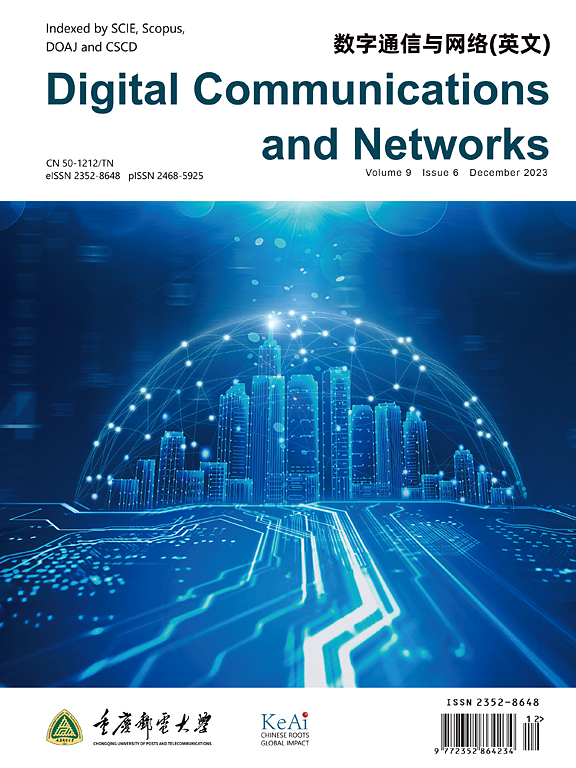A teacher-student based attention network for fine-grained image recognition
IF 7.5
2区 计算机科学
Q1 TELECOMMUNICATIONS
引用次数: 0
Abstract
Fine-grained Image Recognition (FGIR) task is dedicated to distinguishing similar sub-categories that belong to the same super-category, such as bird species and car types. In order to highlight visual differences, existing FGIR works often follow two steps: discriminative sub-region localization and local feature representation. However, these works pay less attention on global context information. They neglect a fact that the subtle visual difference in challenging scenarios can be highlighted through exploiting the spatial relationship among different sub-regions from a global view point. Therefore, in this paper, we consider both global and local information for FGIR, and propose a collaborative teacher-student strategy to reinforce and unity the two types of information. Our framework is implemented mainly by convolutional neural network, referred to Teacher-Student Based Attention Convolutional Neural Network (T-S-ACNN). For fine-grained local information, we choose the classic Multi-Attention Network (MA-Net) as our baseline, and propose a type of boundary constraint to further reduce background noises in the local attention maps. In this way, the discriminative sub-regions tend to appear in the area occupied by fine-grained objects, leading to more accurate sub-region localization. For fine-grained global information, we design a graph convolution based Global Attention Network (GA-Net), which can combine extracted local attention maps from MA-Net with non-local techniques to explore spatial relationship among sub-regions. At last, we develop a collaborative teacher-student strategy to adaptively determine the attended roles and optimization modes, so as to enhance the cooperative reinforcement of MA-Net and GA-Net. Extensive experiments on CUB-200-2011, Stanford Cars and FGVC Aircraft datasets illustrate the promising performance of our framework.
基于师生注意力网络的细粒度图像识别
细粒度图像识别(Fine-grained Image Recognition, FGIR)任务致力于区分属于同一超类别的相似子类别,如鸟类种类和汽车类型。为了突出视觉差异,现有的FGIR工作通常遵循两个步骤:判别子区域定位和局部特征表示。然而,这些研究较少关注全局语境信息。他们忽略了一个事实,即在具有挑战性的场景中,微妙的视觉差异可以通过从全球角度利用不同子区域之间的空间关系来突出。因此,在本文中,我们考虑了FGIR的全局和局部信息,并提出了一种师生协作策略来加强和统一这两种类型的信息。我们的框架主要由卷积神经网络实现,称为基于师生的注意卷积神经网络(T-S-ACNN)。对于细粒度的局部信息,我们选择经典的多注意网络(MA-Net)作为基线,并提出一种边界约束来进一步降低局部注意图中的背景噪声。这样,判别子区域往往出现在细粒度目标占据的区域,从而实现更准确的子区域定位。对于细粒度的全局信息,我们设计了一个基于图卷积的全局注意网络(GA-Net),该网络可以将从MA-Net提取的局部注意图与非局部技术相结合,以探索子区域之间的空间关系。最后,提出了一种自适应确定参与角色和优化模式的师生协作策略,以增强MA-Net和GA-Net的协同强化。在ub -200-2011、斯坦福汽车和FGVC飞机数据集上进行的大量实验表明,我们的框架具有良好的性能。
本文章由计算机程序翻译,如有差异,请以英文原文为准。
求助全文
约1分钟内获得全文
求助全文
来源期刊

Digital Communications and Networks
Computer Science-Hardware and Architecture
CiteScore
12.80
自引率
5.10%
发文量
915
审稿时长
30 weeks
期刊介绍:
Digital Communications and Networks is a prestigious journal that emphasizes on communication systems and networks. We publish only top-notch original articles and authoritative reviews, which undergo rigorous peer-review. We are proud to announce that all our articles are fully Open Access and can be accessed on ScienceDirect. Our journal is recognized and indexed by eminent databases such as the Science Citation Index Expanded (SCIE) and Scopus.
In addition to regular articles, we may also consider exceptional conference papers that have been significantly expanded. Furthermore, we periodically release special issues that focus on specific aspects of the field.
In conclusion, Digital Communications and Networks is a leading journal that guarantees exceptional quality and accessibility for researchers and scholars in the field of communication systems and networks.
 求助内容:
求助内容: 应助结果提醒方式:
应助结果提醒方式:


